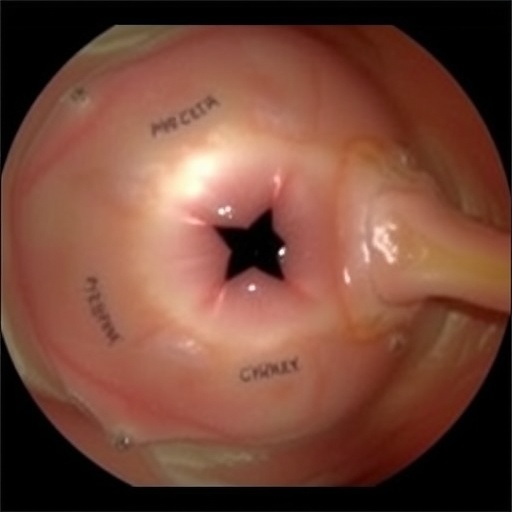In a profound new investigation that illuminates the intricate pathology and clinical management of ameloblastoma, researchers from Khartoum Teaching Dental Hospital have delivered groundbreaking insights into one of the most enigmatic odontogenic tumors. This extensive retrospective cross-sectional study embraces the largest histopathological dataset from Sudan, encompassing 390 biopsy-confirmed ameloblastoma cases diagnosed between 2010 and 2017. The findings highlight critical correlations between tumor histology, anatomical location, therapeutic interventions, and post-treatment recurrence, offering a refined framework to optimize patient outcomes in resource-limited settings.
Ameloblastoma, a rare but locally aggressive tumor originating from odontogenic epithelium, remains a formidable clinical challenge due to its insidious growth patterns and propensity for recurrence. By deploying a rigorous laboratory-based review, the Sudanese team meticulously cataloged demographic attributes alongside detailed pathological characteristics, casting new light on the natural history and cellular architecture of these lesions. The cohort’s demographic profile revealed a mean age of approximately 31 years, with cases spanning adolescents to elderly adults, affirming the tumor’s heterogeneous onset in diverse age brackets.
A notable male predominance emerged in the dataset, with a male-to-female ratio of 1.3:1, propounding potential gender-linked genetic or environmental influences in tumor genesis. Anatomically, the mandible served as the principal site of tumor presentation, harboring nearly 70% of cases predominantly manifesting as painless, progressively enlarging swellings. This predilection underscores the mandible’s susceptibility to odontogenic tumors, affirming the necessity for targeted surveillance in populations prone to late clinical presentations.
Microscopically, the histopathological spectrum portrayed a dominant follicular pattern accounting for close to 45% of cases, characterized by nests of ameloblastic epithelial cells demonstrating peripheral palisading and central stellate reticulum-like zones. The plexiform pattern followed as the second most frequent histological subtype, present in almost a third of tumors, manifesting as interlacing cords and sheets of cells. Intriguingly, recurrent tumors exhibited a disproportionate increase in plexiform histology, suggesting a unique biological behavior that merits further molecular exploration.
The deliberate focus on tumor size, clinical presentation, and radiographic features integrated with histopathological phenotypes allowed the researchers to dissect the tumor’s biological behavior comprehensively. Such detailed morphological and clinical correlations are paramount given ameloblastoma’s notorious ignorability in early manifest phases and its radiographic mimicry of benign jaw cysts. Thus, this dataset elucidates critical predictive markers aiding in differential diagnosis and prognostic estimation.
Treatment modalities distilled from this extensive patient pool accentuated the dichotomy between conservative and radical surgical approaches. Only a scant fraction of recurrent cases had undergone radical resection, contrasting markedly with a substantial proportion managed conservatively. Notably, the recurrence rate neared a troubling quarter of the cohort, spotlighting inadequacies in existing treatment algorithms and advocating for surgical aggressiveness in initial management.
Radical surgery, as championed by the authors, entails en bloc resection with adequate margins, aiming to eradicate microscopic residual tumor cells that fuel relapse. This recommendation withstands global scrutiny, resonating with established surgical oncology principles that emphasize complete excision to preclude local recurrence. However, the implications of such extensive surgery are complex, balancing functional and aesthetic morbidity against oncological control, especially in anatomically sensitive craniofacial zones.
This comprehensive histopathological study further critiques the conservative management paradigm, which typically involves curettage or enucleation, procedures often favored for their reduced immediate morbidity but hindered by high failure rates. The study’s longitudinal follow-up data bolster the argument that conservative measures frequently culminate in tumor persistence or recurrence, demanding subsequent more radical interventions.
Socioeconomic analyses embedded within the study shed light on healthcare access disparities that potentially influence treatment selection and outcomes. By employing sophisticated statistical methods, including chi-square and Duncan’s multiple range tests, the research team dissected how demographic and economic variables intertwine with clinical decision-making. Such insights prompt a reevaluation of healthcare frameworks to enable equitable delivery of optimal cancer care modalities.
The article’s methodological rigor is noteworthy, integrating standardized diagnostic criteria and systematic data collation from laboratory request forms and clinical records. This strategy ensures data fidelity and reproducibility, positioning the study as a benchmark for ameloblastoma research within low-resource environments. Furthermore, the multidisciplinary collaboration signifies a translational approach, merging pathology, maxillofacial surgery, and oncology expertise.
These revelations bear significance beyond Sudanese borders, resonating with maxillofacial surgical communities worldwide confronting ameloblastoma’s management. The advocacy for radical surgical intervention, informed by detailed histopathological profiling, may instigate revisions in clinical protocols and inspire multicentric studies to validate these findings globally.
Future research directions prompted by this work include molecular characterization of histopathological subtypes to unravel pathogenesis pathways, potentially unveiling targets for adjuvant therapies. Additionally, integrating advanced imaging with histopathology could refine preoperative mapping, minimizing surgical morbidity while maximizing tumor clearance.
Notably, the study underscores the imperative of early diagnosis through dentist and clinician awareness programs to combat the risk of late presented giant ameloblastomas, which complicate surgical management. Prevention and public health strategies tailored to regional demographic patterns could significantly lower disease burden.
In summation, this seminal investigation from Khartoum Teaching Dental Hospital delivers a compelling narrative redefining ameloblastoma management. By integrating gross histopathological features with treatment outcomes, it furnishes an evidence base anchoring radical resection as the cornerstone of therapy and challenges conservative treatment dogmas. Its contribution carves a pathway towards improved prognostication, tailored intervention, and ultimately enhanced patient survival and quality of life in ameloblastoma sufferers.
Subject of Research: Ameloblastoma histopathological characteristics, treatment outcomes, and recurrence patterns
Article Title: Gross histopathological features and treatment outcomes of ameloblastoma at Khartoum Teaching Dental Hospital: A retrospective cross-sectional study
Article References: Ahmed, S.E.M., Alim, N., Akhter, F. et al. Gross histopathological features and treatment outcomes of ameloblastoma at Khartoum teaching dental hospital: A retrospective cross-sectional study. BMC Cancer 25, 890 (2025). https://doi.org/10.1186/s12885-025-14317-3
Image Credits: Scienmag.com
DOI: https://doi.org/10.1186/s12885-025-14317-3
Keywords: Ameloblastoma, odontogenic tumors, histopathology, follicular pattern, plexiform pattern, recurrence, radical surgery, conservative surgery, maxillofacial oncology, Sudan




